We’re making the infographics and charts from this issue of the ReThink Quarterly available for anyone to use in their own presentations and reports.
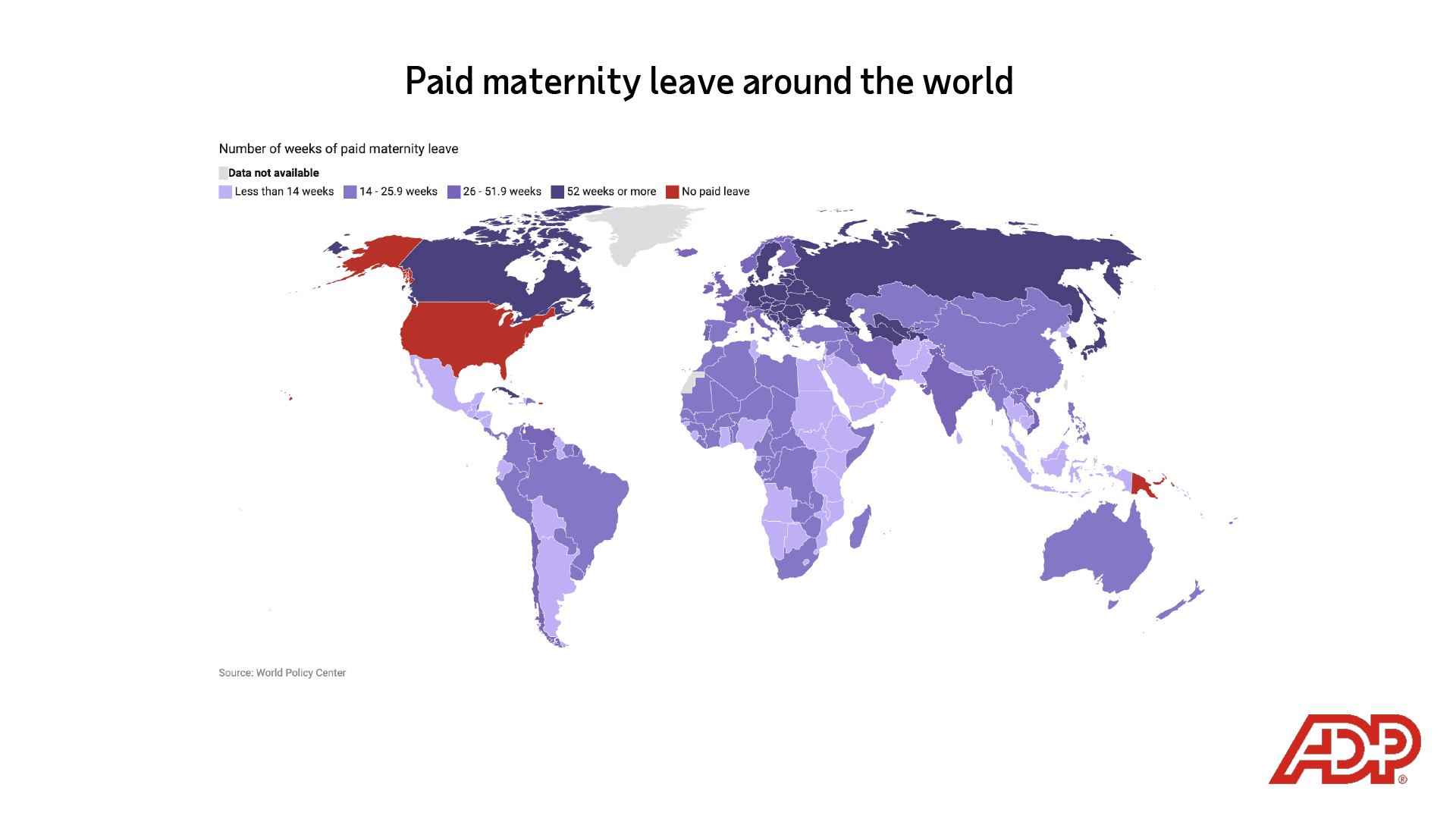
The International Labor Organization recommends a minimum of 14 weeks of paid maternal leave at least two-thirds of the previous salary.
Embed this visualization
<iframe title="Paid maternity leave around the world" src="https://datawrapper.dwcdn.net/sM7mQ/2/" frameborder="0" height="410"></iframe>
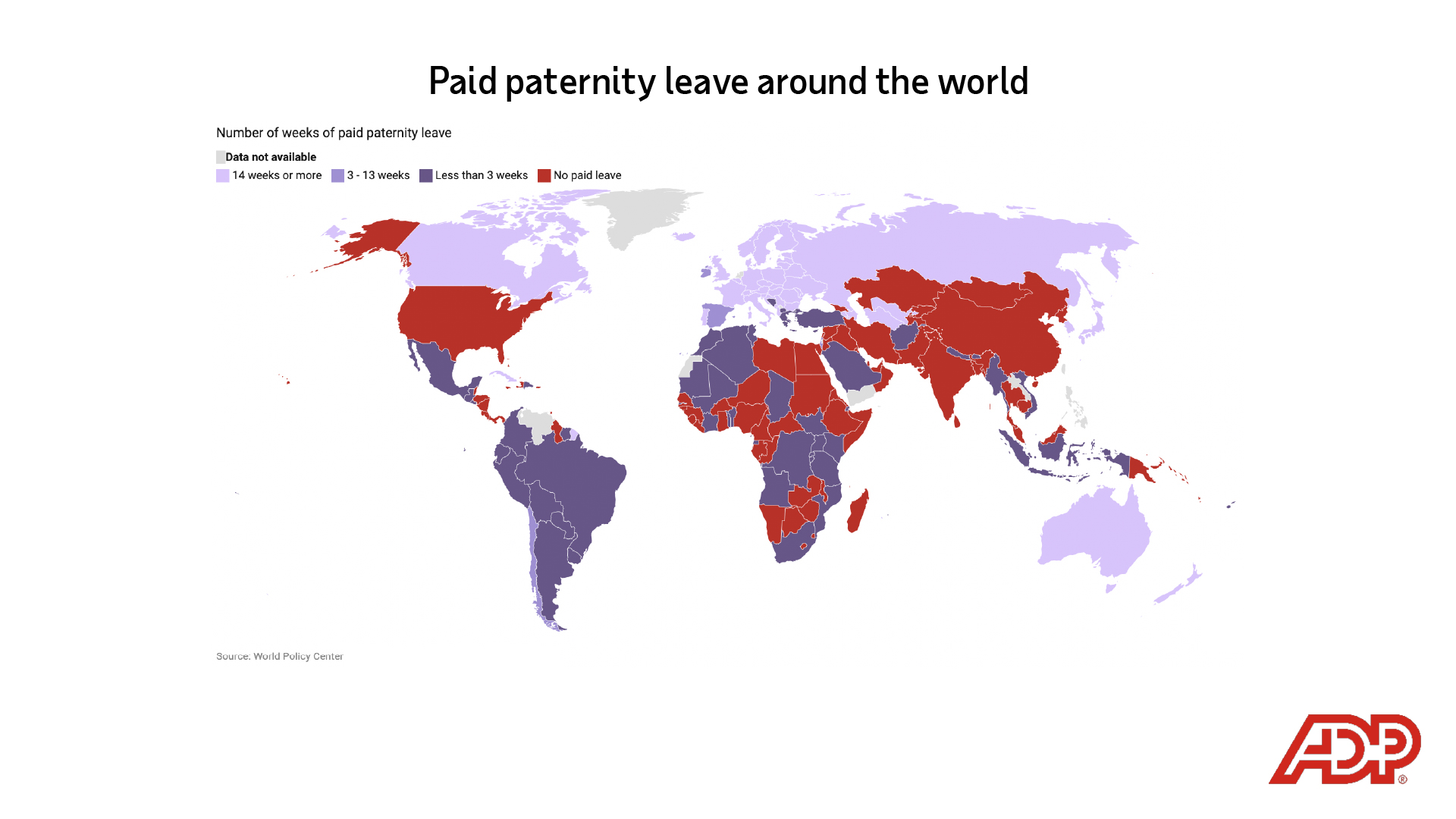
Most countries around the world don’t mandate paternity pay. That includes the world’s two most populous countries, China and India, as well as the United States.
Embed this visualization
<iframe title="Paid paternity leave around the world" src="https://datawrapper.dwcdn.net/MrTX4/2/" frameborder="0" height="410"></iframe>

But many more countries around the world are adopting provisions for mandated parental leave. In the past decade, 22 countries introduced policies that ensure at least 14 weeks of paid leave for mothers, and another 37 countries began providing paid leave for fathers.
Embed this visualization
<div class="flourish-embed flourish-chart" data-src="visualisation/11110829"><script src="https://public.flourish.studio/resources/embed.js"></script></div>
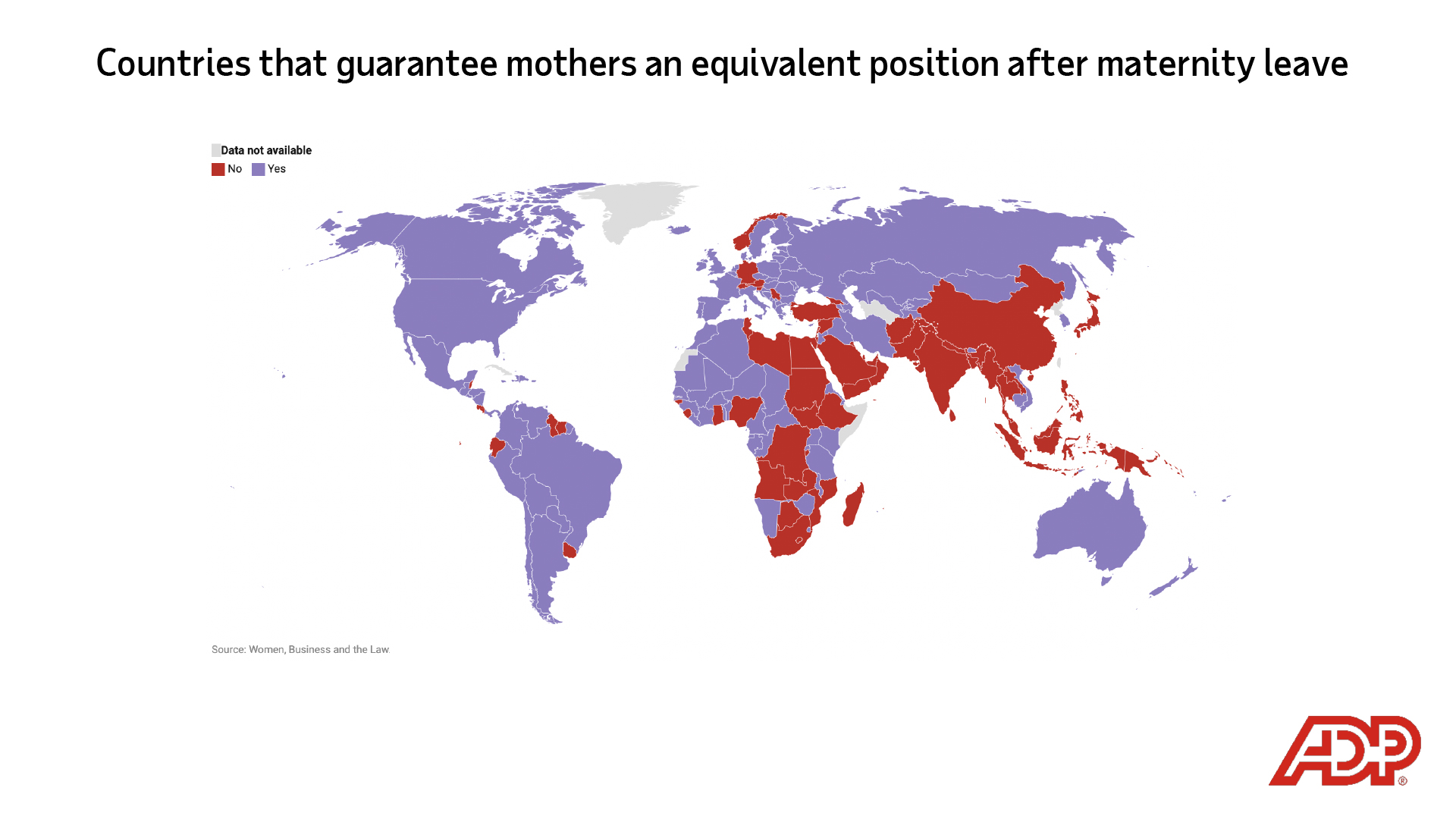
Another factor that has a big impact on the quality of life for families is whether mothers are able to go back to the same job or an equivalent job after their leave. As many as 74 countries do not have any legal provision that ensures mothers can return to the same jobs.
Embed this visualization
<iframe title="Countries that guarantee mothers an equivalent position after maternity leave" src="https://datawrapper.dwcdn.net/W6AUN/4/" frameborder="0" height="410"></iframe>
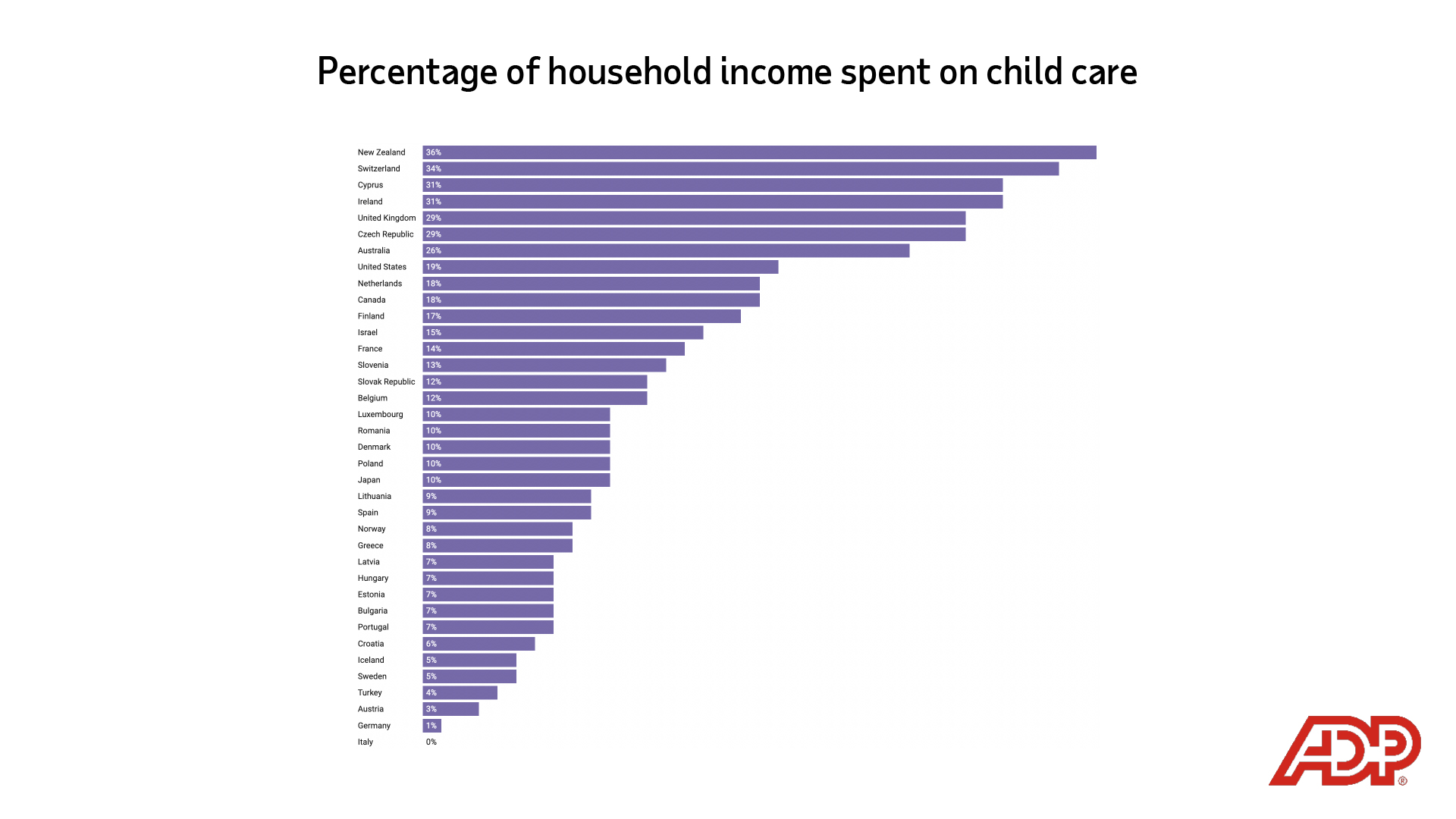
Organization for Economic Co-operation and Development (OECD) research shows that families in some developed nations spend up to a third of their income on childcare.
Embed this visualization
<iframe title="Percentage of household income spent on childcare" src="https://datawrapper.dwcdn.net/63wHt/7/" frameborder="0" height="410"></iframe>
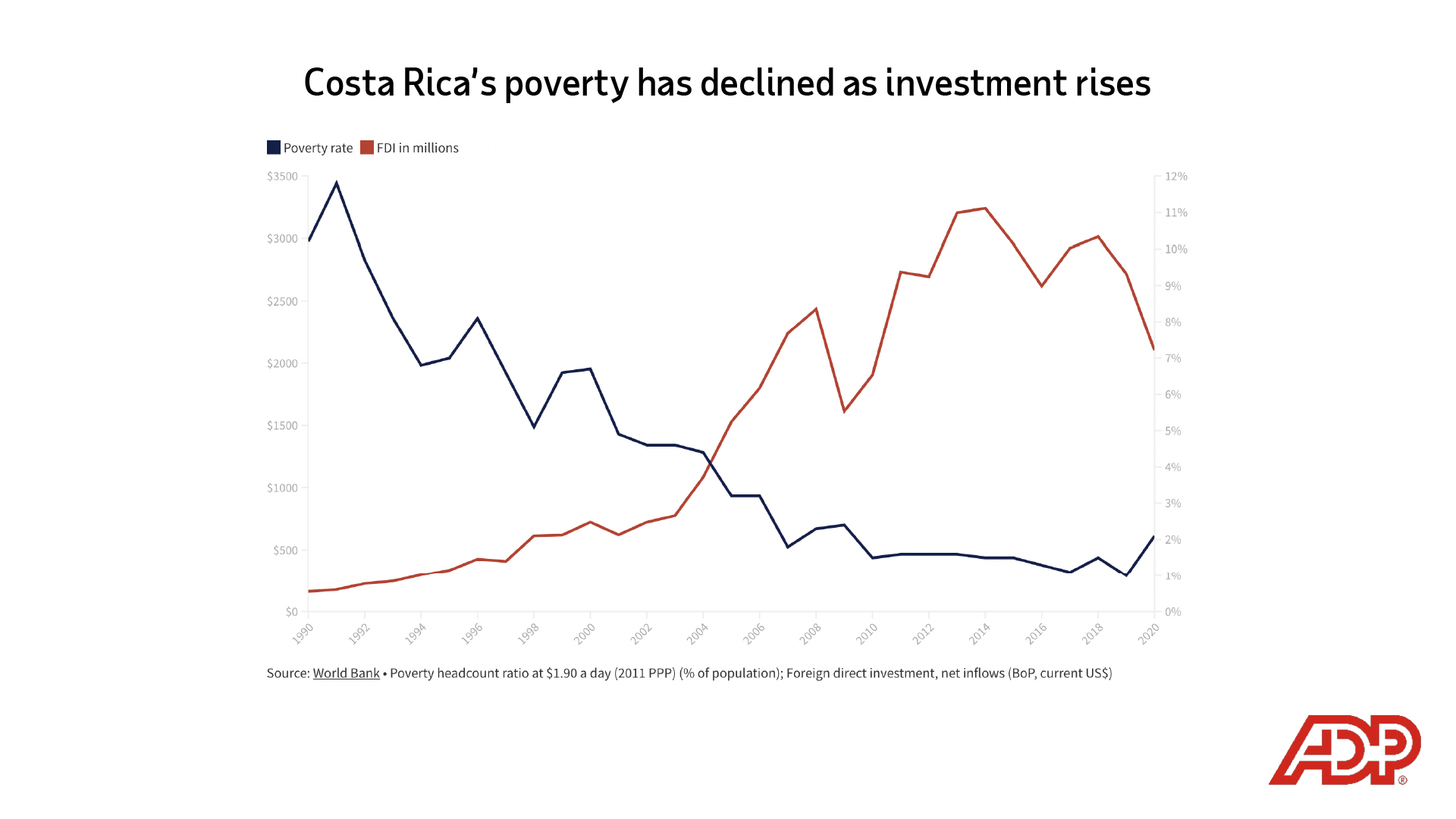
Poverty has declined in Costa Rica as foreign investment has increased since 1990, with the introduction of the free-trade zones.
Embed this visualization
<div class="flourish-embed flourish-chart" data-src="visualisation/10775606"><script src="https://public.flourish.studio/resources/embed.js"></script></div>
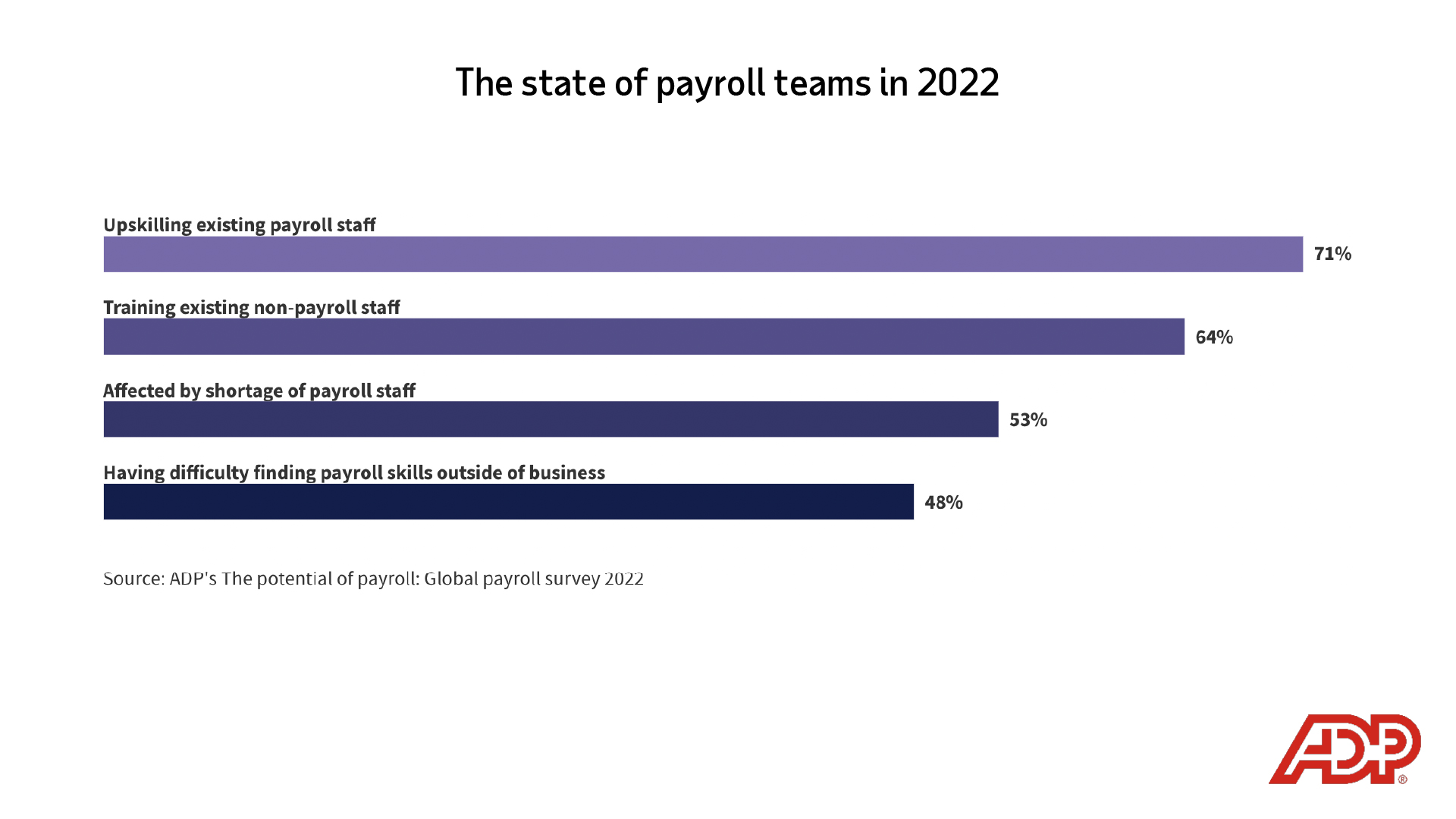
In ADP’s soon-to-be-released study, The potential of payroll: Global payroll survey 2022, more than half of respondents said their payroll service has been affected by a shortage of payroll staff. The nearly 1,500 payroll stakeholders at multinational companies surveyed reported multiple tactics to tackle the shortage.
Embed this visualization
<div class="flourish-embed flourish-hierarchy" data-src="visualisation/11065868"><script src="https://public.flourish.studio/resources/embed.js"></script></div>
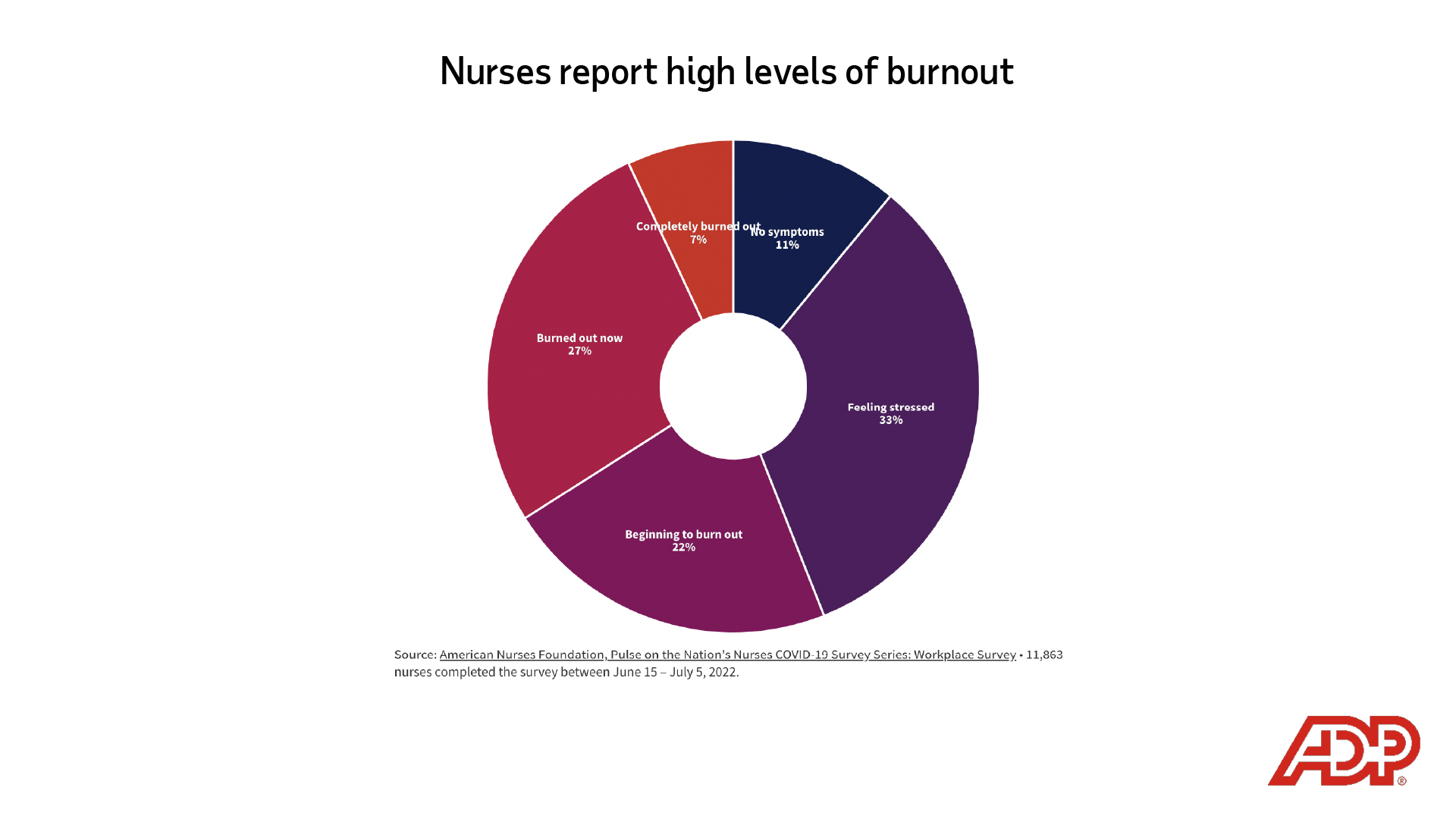
In a survey of more than 11,000 nurses about their mental health this summer, the American Nurses Foundation (ANF) found that only 11% report not feeling stressed or burned out.
Embed this visualization
<div class="flourish-embed flourish-chart" data-src="visualisation/11069643"><script src="https://public.flourish.studio/resources/embed.js"></script></div>
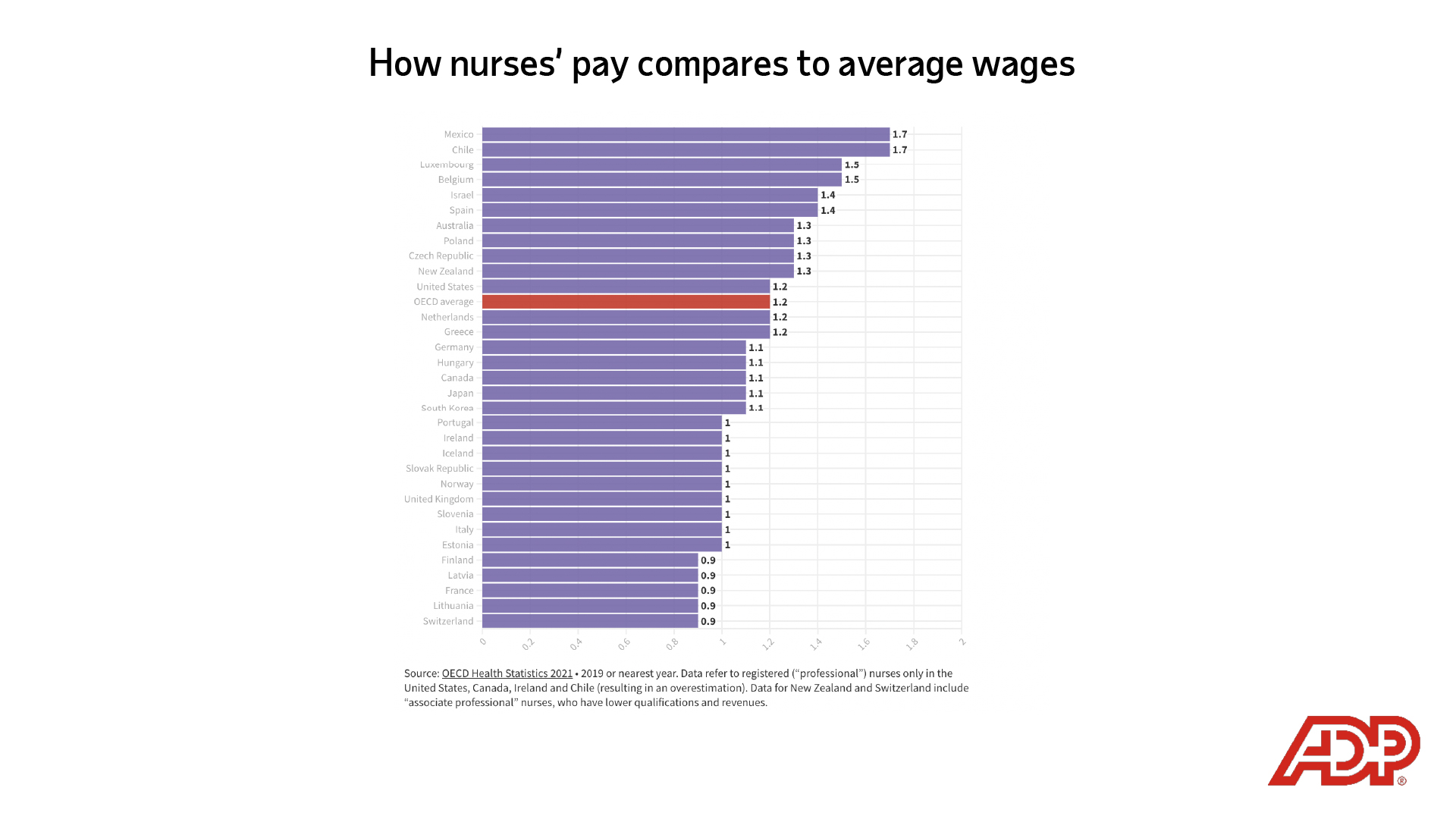
Wages for nursing are higher than average in some countries, but not all of them, according to data from the OECD.
Embed this visualization
<div class="flourish-embed flourish-chart" data-src="visualisation/11075588"><script src="https://public.flourish.studio/resources/embed.js"></script></div>
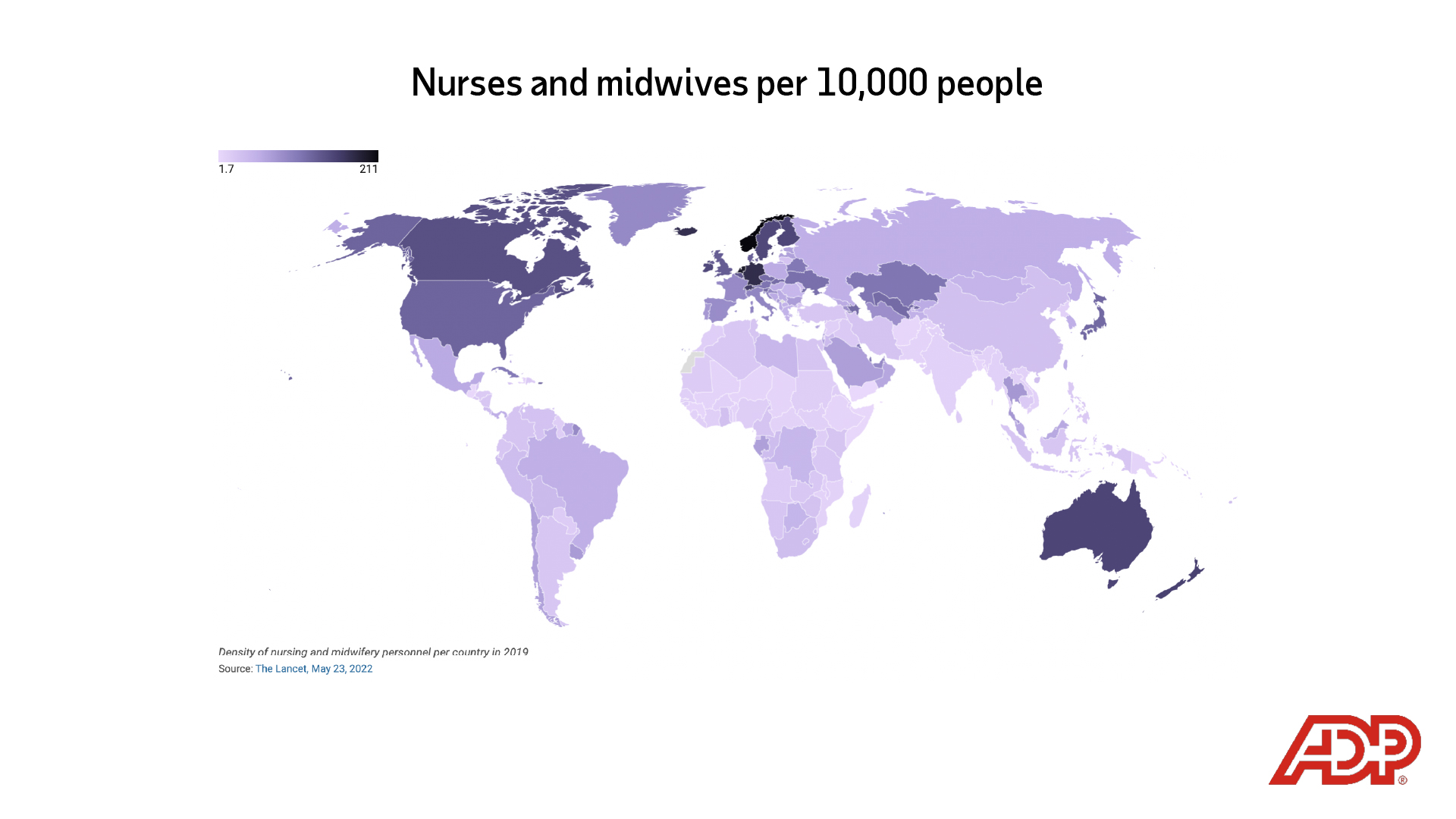
The Lancet report notes that the global density of nurses and midwives in 2019 was 38.6 per 10,000 people, and has increased steadily over the past 40 years. But there is a wide density gap between high-income countries and the rest of the world: High-income countries have on average 114.9 nurses per 10,000 people, while South Asia has just 9.7, Oceania 11.4, and sub-Saharan Africa 18.3.
Embed this visualization
<iframe title="Nurses and midwives per 10,000 people" src="https://datawrapper.dwcdn.net/ttZhf/1/" frameborder="0" height="410"></iframe>
Sign up to keep up to date with ReThink Q.


